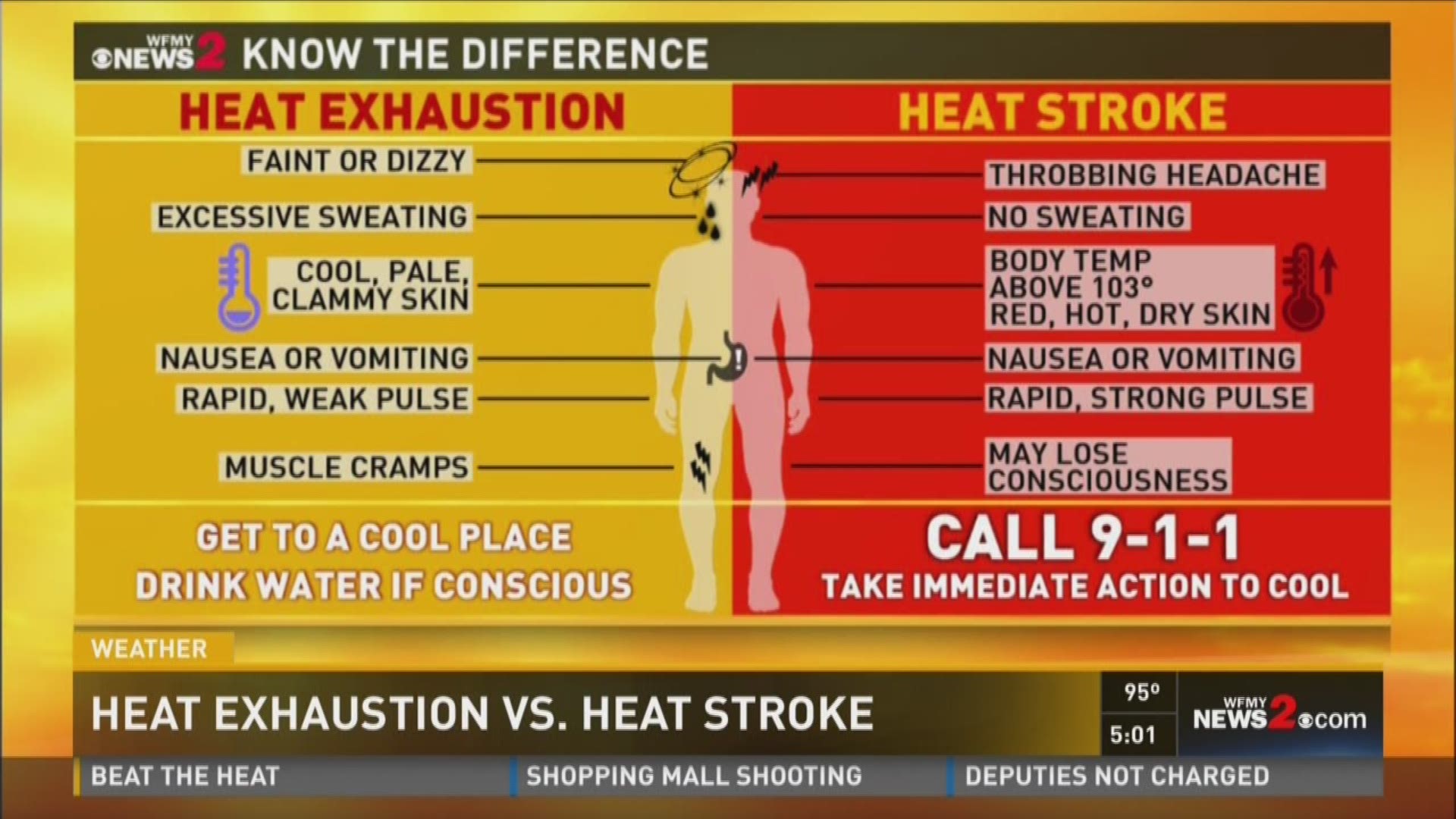It's usually during a heat wave that we talk about staying hydrated and taking precautions to avoid having a heatstroke. It can happen anytime, even when it's not summer, but is more likely to happen during a stretch of hot days when you need to be outside or if you work outside.
Heat-related illnesses are preventable if you know the differences and the symptoms.
HEAT EXHAUSTION is the precursor to heatstroke and is a direct result of the body overheating. According to Mayo Clinic, heat exhaustion is identifiable by heavy sweating, rapid pulse, dizziness, fatigue, cool, moist skin with goose bumps when in the heat, muscle cramps, nausea and headache. These symptoms may develop over time or come on suddenly, especially during or following periods of prolonged exercise.
When heat exhaustion is not addressed, heatstroke can follow.
Signs and symptoms of heat exhaustion may develop suddenly or over time, especially with prolonged periods of exercise.
Possible heat exhaustion signs and symptoms include (Source: Mayo Clinic):
- Cool, moist skin with goose bumps when in the heat
- Heavy sweating
- Faintness
- Dizziness
- Fatigue
- Weak, rapid pulse
- Low blood pressure upon standing
- Muscle cramps
- Nausea
- Headache
TREATMENT: If you think you're experiencing heat exhaustion:
- Stop all activity and rest
- Move to a cooler place
- Drink cool water or sports drinks
HEATSTROKE is a condition caused by your body overheating, usually as a result of prolonged exposure to or physical exertion in high temperatures, according to the Mayo Clinic. This most serious form of heat injury, heatstroke, can occur if your body temperature rises to 104 F (40 C) or higher.
Heatstroke signs and symptoms include (Source: Mayo Clinic):
- High body temperature. A core body temperature of 104 F (40 C) or higher, obtained with a rectal thermometer, is the main sign of heatstroke.
- Altered mental state or behavior. Confusion, agitation, slurred speech, irritability, delirium, seizures and coma can all result from heatstroke.
- Alteration in sweating. In heatstroke brought on by hot weather, your skin will feel hot and dry to the touch. However, in heatstroke brought on by strenuous exercise, your skin may feel dry or slightly moist.
- Nausea and vomiting. You may feel sick to your stomach or vomit.
- Flushed skin. Your skin may turn red as your body temperature increases.
- Rapid breathing. Your breathing may become rapid and shallow.
- Racing heart rate. Your pulse may significantly increase because heat stress places a tremendous burden on your heart to help cool your body.
- Headache. Your head may throb.
TREATMENT: Take immediate action to cool the overheated person while waiting for emergency treatment.
- Get the person into shade or indoors.
- Remove excess clothing.
- Cool the person with whatever means available — put in a cool tub of water or a cool shower, spray with a garden hose, sponge with cool water, fan while misting with cool water, or place ice packs or cold, wet towels on the person's head, neck, armpits and groin.
Click on Heat-Related Illnesses for more on signs, symptoms on Mayo Clinic's website.

